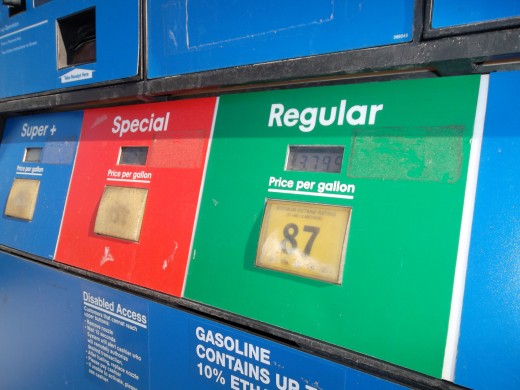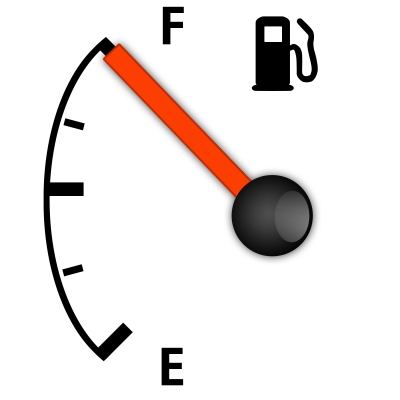How to Calculate Gas Mileage & Improve Fuel Efficiency
Gas mileage & fuel efficiency
As the cost of gas has steadily risen over the last couple of years, so too has concern over automobile gas mileage and fuel efficiency. So much so that in January 2012 a California woman had her day in court, suing the the makers of her 2006 hybrid Honda Civic, claiming her car does not live up to the manufacturer's stated gas mileage claims.
>> What should your real gas mileage be?
Gas mileage and fuel efficiency has even been studied by MIT economist, Christopher Knittel. Interestingly, Knittel found that cars of today are actually 60% more fuel efficient than cars made during the 1980s. However, gas mileage has only increased 15%. Why is there such a disparity? Simple, factors that cut deeply into gas mileage, namely weight of a car and horsepower, are both greater today than a few decades ago. Therefore, while fuel efficiency has increased dramatically, gas mileage has not increased near as much due to consumer demand for heavier, more power vehicles.
>> The Case of the Missing Gas Mileage
Do you know your car's gas mileage?


Consider gas mileage when buying a new car
How to figure gas mileage
Miles per Gallon = mileage distance / fuel consumption in gallons
With the cost of a gas hovering around the $4.00 mark per gallon, it is important now more than ever to know your car's actual gas mileage. If you compute gas mileage regularly then you will be aware when your fuel efficiency goes down which in turn alerts you to car maintenance issues. If you have more than one car you will want to accurately compute the gas mileage for both cars, so you can make informed decisions about which car is best (cheapest) to use for certain trips.
Most people probably understand that figuring out gas mileage has something to do with mpg (miles per gallon) but are not sure how to go about actually getting the exact numbers to do the math. In order to calculate miles per gallon, you will need to know your mileage distance and your fuel consumption.

Calculate gas mileage regularly

Steps to calculate gas mileage: miles per gallon (mpg)
1. Go to the gas station, fill up your fuel tank and reset your trip meter to zero. Make sure that you fill up your tank with gasoline to the point that it is full. If you are unsure of what the trip meter is, it is usually on the dashboard near your total miles. Normally, you can hold in a button and the trip meter will reset to zero.
2. Go about your normal driving habits until your gas tank gets low. It doesn't have to be empty, just low enough to make the mpg calculation more accurate.
3. Return to the gas station and fill your tank up again. Now it's time to get the two numbers (mileage distance driven and fuel consumption) needed to calculate mpg. The mileage distance driven since your previous gas fill up is on the trip meter. The fuel consumption, which is the number of gallons of gas consumed since your last trip, is on the receipt from this second fill-up and on the pump.
4. Calculate mpg by dividing miles driven by gallons used. Get a calculator; the one on your cell phone will do the job; and divide miles by gallons and to get mpg.
5. Repeat steps 1-4. If you want to calculate mpg the next time you fill up at the gas station just be sure to reset your trip meter to zero each time you get a full tank of gas.
An example of mpg: If your trip meter reads 312 and the number of gallons of gas on your receipt says 11.03 then perform this calculation on your calculator: 312 miles / 11.03 gallons. The result is 28.29 mpg.
Knowing your car's mpg can help you save money. Once you know your mpg you can get an idea of how much it costs to make certain trips. In the example above the car gets 28 mpg. If a gallon of gas is $4 begin to think this way -- "every 28 miles I drive costs me $4." Then you can judge if a trip is worth the money. Maybe you will begin to plan better and condense errands. If your round trip to work and home is 56 miles each day, then you easily can see that each day that trip costs $8. If you have the ability to telecommute 2 days a week then you would save $64 in gas per month or $768 per year.
It's been said that knowledge is power. And now that you're armed with the knowledge of what it really costs to drive your car, you have the power to make informed choices and save money.

Steps to increase gas mileage
Just making a few simple changes to the way you drive and simple maintenance can increase gas mileage.
1. Do not idle your engine. Idling your car's engine uses a lot of fuel and kills your fuel efficiency. If you find yourself stuck in traffic idling perhaps you can adjust your work hours to times when traffic is not as heavy. The California Energy Commission states that idling your car for 2 minutes is the same as driving it 1 mile.
2. Make fewer left turns. This may sound strange, but it works - just ask UPS. UPS drivers know that making fewer left turns saves them time, and therefore saves fuel. By reducing the number of left turns their 95,000 trucks make, UPS was able to save 3 million gallons of gas in one year. If you can plan an efficient route, avoiding left turns, then your trip may be faster, idling time may be reduced, and fuel saved.
3. Drive between 30 and 60 mph. Your car is at is most fuel efficient at these speeds. If you are able to take a highway instead of back roads then it may be worth your while from a fuel efficiency standpoint.
4. Avoid fast starts and hard breaking. By avoiding both fast starts and hard breaking you can possibly increase your fuel efficiency by as much as 30%.
5. Keep your tires inflated. If the pressure on your tires is low then so will be your gas mileage. Get in the habit of checking your tire pressure by keeping a small tire pressure gauge in your car.






